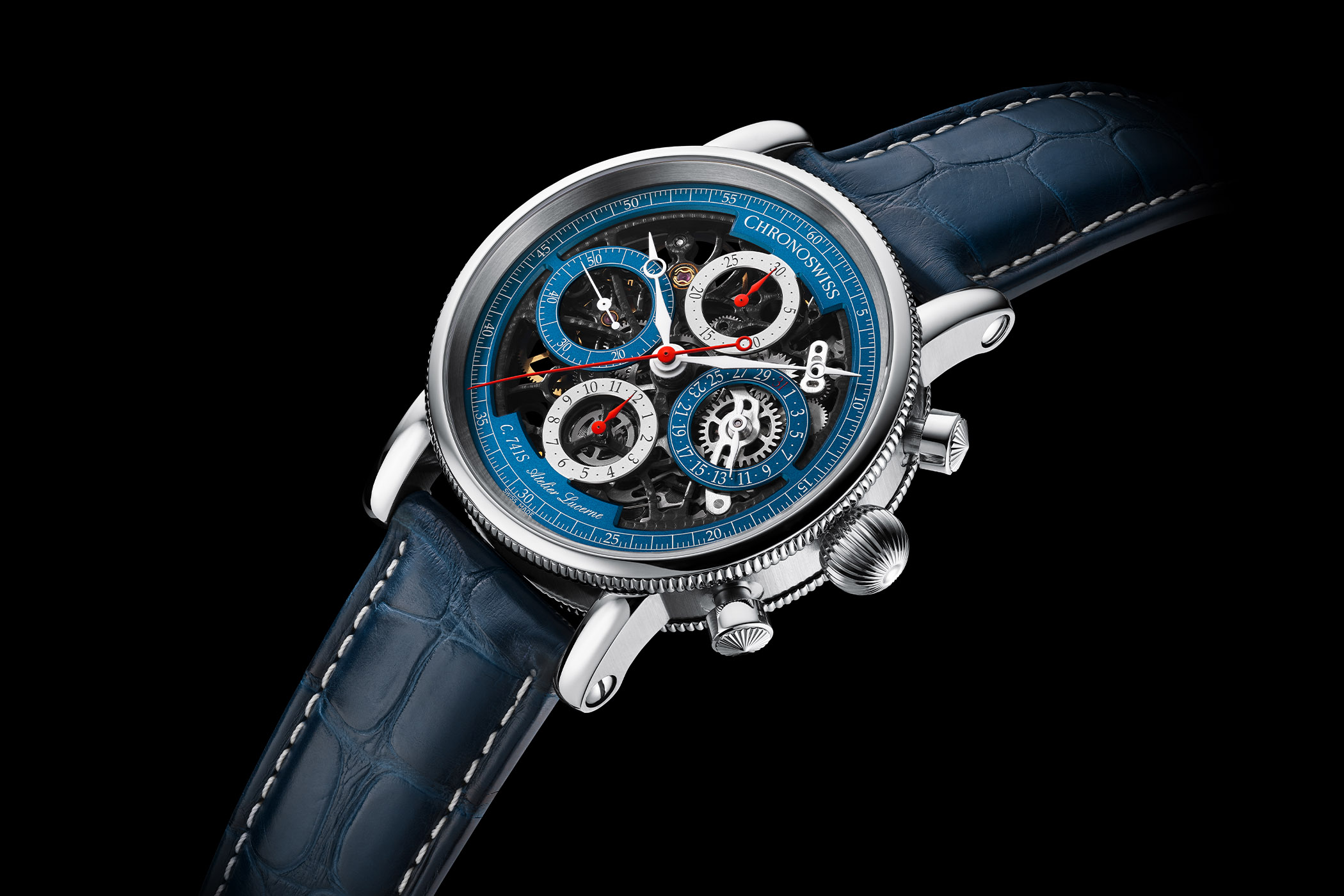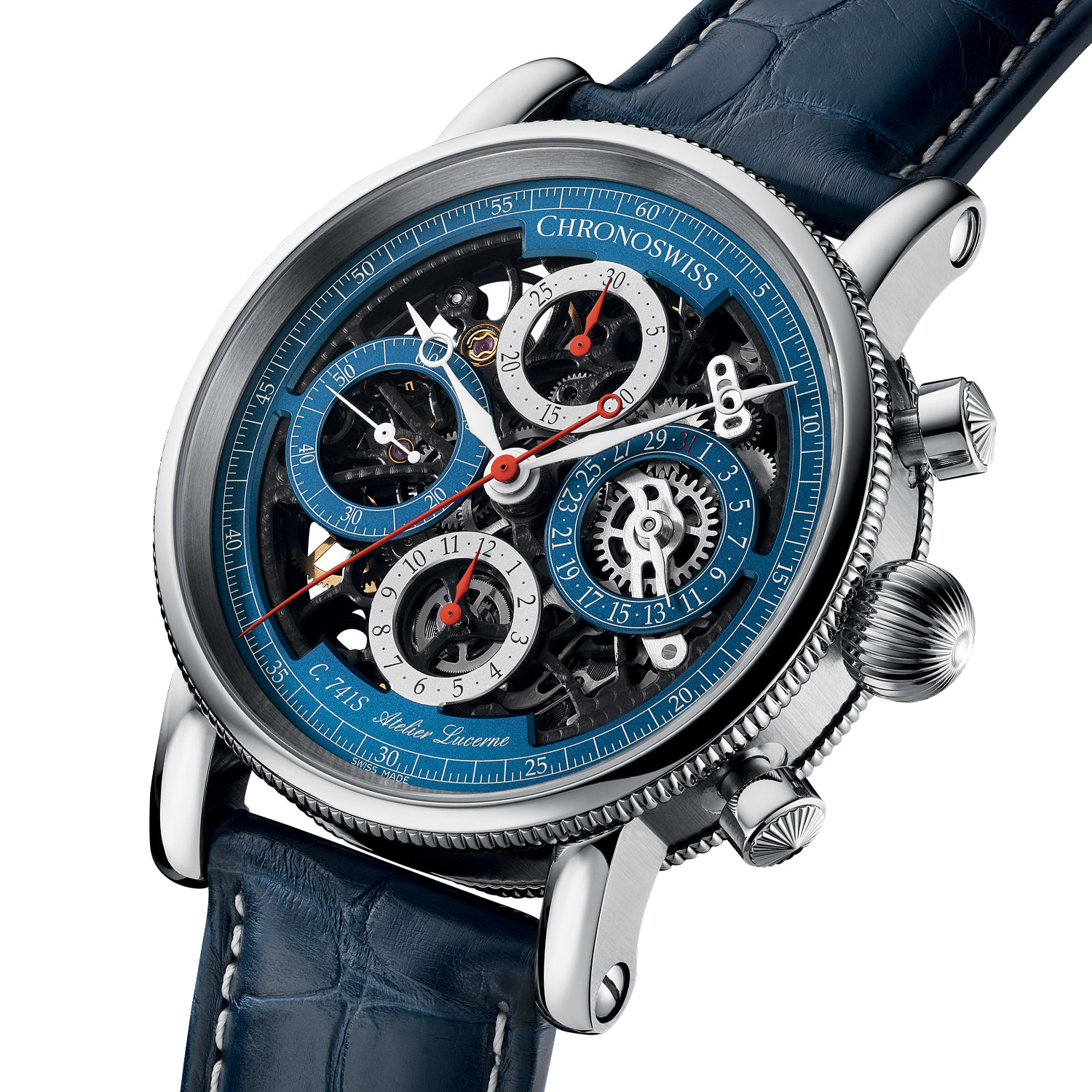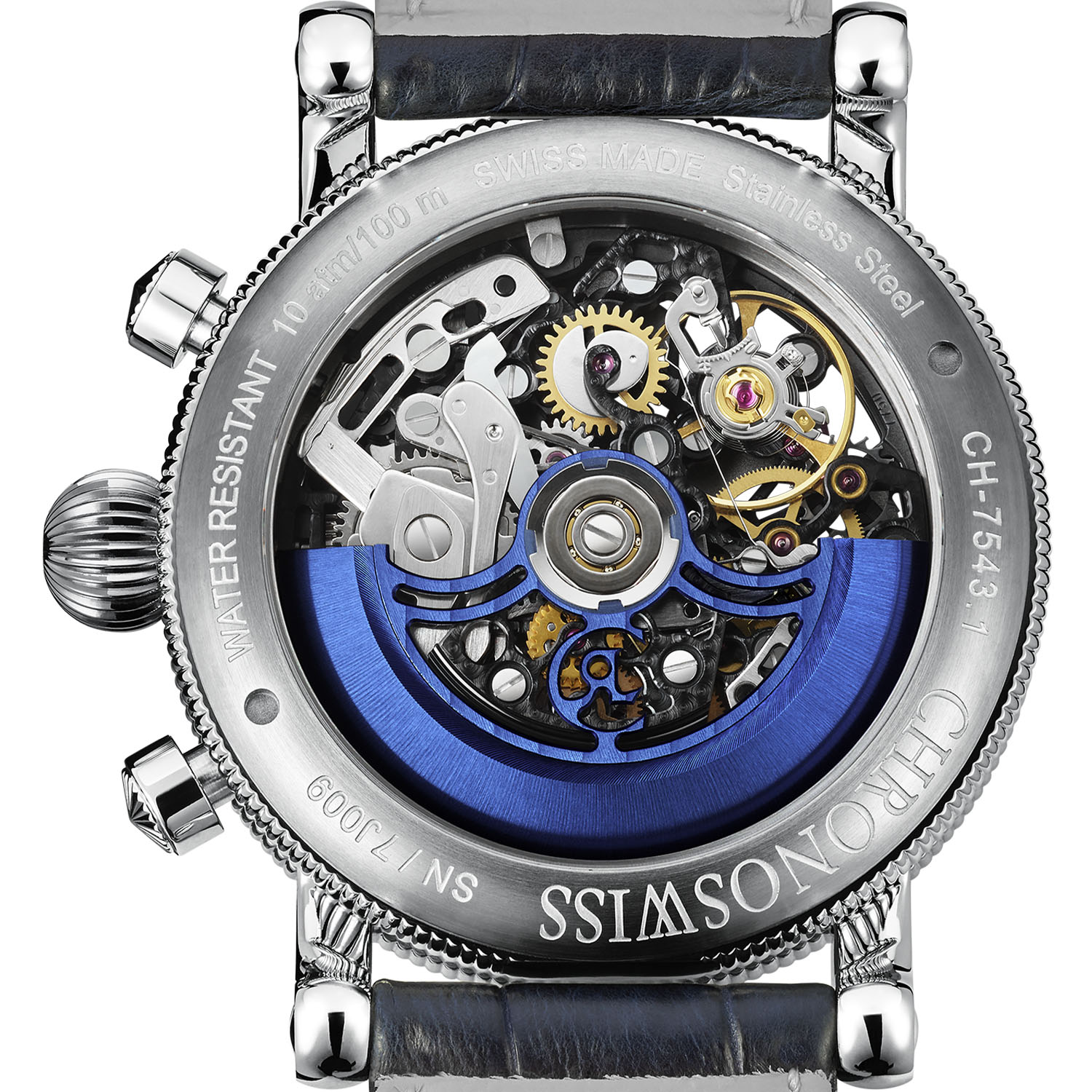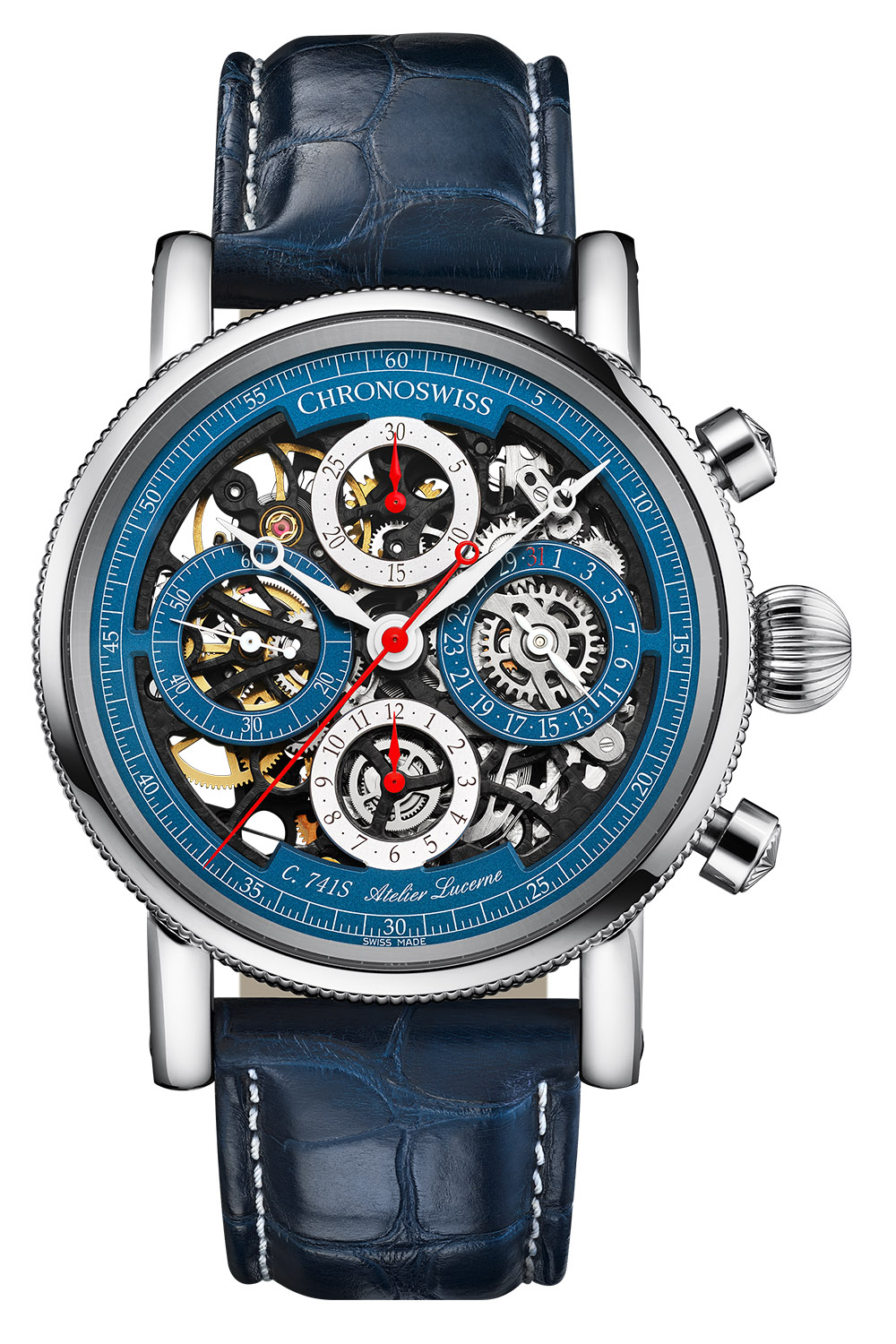The Chronoswiss Opus Chronograph Flag
The latest skeletonized Opus sports the most common colours of national flags

Chronoswiss is best known for its vast portfolio of regulators, a style pioneered by the brand with the first serially produced wristwatch launched in 1987 – the Régulateur. While I’m a big fan and even went in-depth with the evolution of Chronoswiss regulators, there’s another pioneering style that helps define the brand. In 1995, Chronoswiss introduced the Opus, the world’s first skeletonized automatic chronograph. The intricacies of the complex movement were on full display under the sub-dials and the style eventually made it to the regulator collection with the Flying Grand Regulator Skeleton Limited Edition and other models. The latest Opus Chronograph Flag sports a bold blue with white and red highlights, bringing colours common with national flags to a familiar classic.
The stainless steel case has all the hallmarks of Chronoswiss, including an oversized onion crown, knurled edges on both sides and arching lugs. At 41mm in diameter and 14.8mm in height, it’s contemporary and very wearable and has both brushed and satin surfaces. It’s a deceptively complex case of 23 pieces with sapphire crystals on the front and back, with the former having multiple anti-reflective coatings. The two chronograph pushers have a flattened onion aesthetic at the ends, matching the style of the crown. Exposed screws secure the Louisiana alligator leather strap to the lugs via the brand’s patented Autobloc system. Flip the watch over and you’ll see a custom blue open-worked rotor decorated with Côtes de Genève and black bridges with perlage. Water-resistance is rated at 100 metres.
The dial side of the movement continues the predominantly black theme, allowing the hands and sub-dials to really pop. Although legibility issues are common with skeletonized pieces, that certainly isn’t the case here. Blue is dominant with the outer minute track (and top and bottom extensions) and sub-dials at 3 and 9 o’clock featuring the colour. The sub-dials at 12 and 6 o’clock, hour and minute hands and hands in the 3 and 9 o’clock sub-dials are white. The chronograph seconds hand and hands in the 12 and 6 o’clock sub-dials are red. These three colours (blue, white and red) are featured on many of the world’s flags. The hour and minute hands have a Breguet Losange shape and all hands are lacquered. The watch is feature-rich with the small seconds at 9 o’clock, 30-minute counter at 12 o’clock, 12-hour counter at 6 o’clock and analogue calendar at 3 o’clock (with the 31 in red). Although the movement is deliberately blacked out for contrast, it’s still visible for skeleton fans, particularly within the calendar and 12-hour counter sub-dials.
The heart of the Opus Chronograph Flag is the Chronoswiss Caliber C.741S automatic, a heavily modified ETA Valjoux 7750. It has 25 jewels, beats at 28,800vph (4Hz) with a 46-hour power reserve. Functions include central hours, minutes and chronograph seconds, small seconds at 9 o’clock, 30-minute counter at 12 o’clock, 12-hour counter at 6 o’clock and analogue calendar at 3 o’clock. The ETA Valjoux 7750 is among the most popular of chronograph workhorses and Chronoswiss has been using it since the original Opus in 1995. As previously mentioned, the bridges are galvanic black with perlage, while the CVD-plated, open-worked blue rotor features subtle Côtes de Genève.
The Chronoswiss Opus Chronograph Flag is available now for CHF 11,400, EUR 11,500, USD 11,400 or GBP 9,800. For more information, visit the Chronoswiss website.







